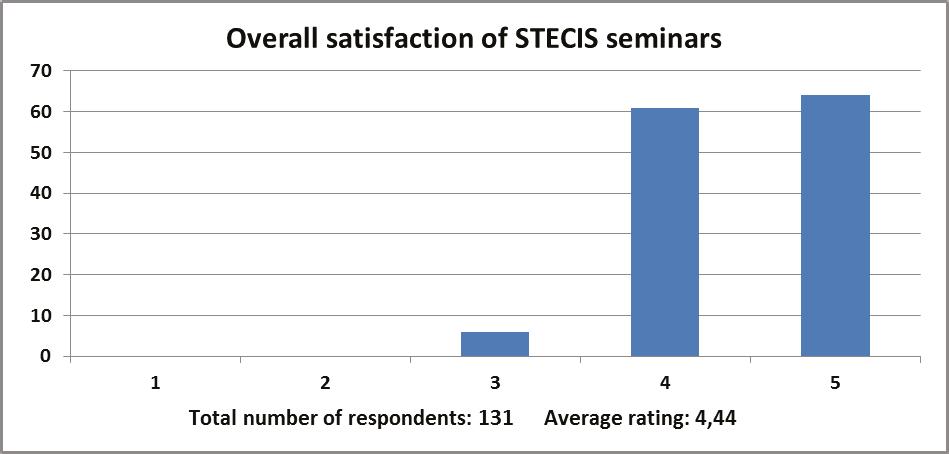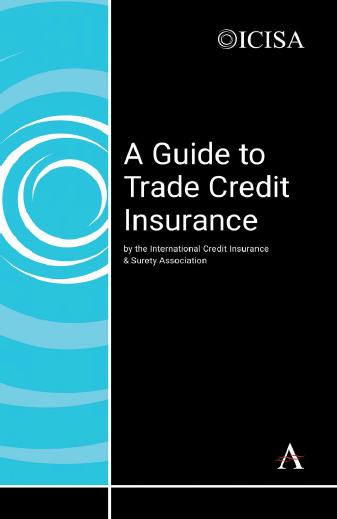
12 minute read
Article Rajiv Biswas, Asian Megatrends
Article by Rajiv Biswas, Asia-Pacific Chief Economist, IHS Markit
ASEAN: Asia’s Third Growth Engine
Advertisement
Since 2012, the Southeast Asian region has sustained robust economic expansion even as growth momentum has slowed in many other emerging market regions. Indonesia, Southeast Asia’s economic giant, which accounts for around 40% of total ASEAN GDP, has been growing at a robust pace of around 5% per year over the past three years, as has the Malaysian economy. Five other ASEAN economies, namely the Philippines, Vietnam, Myanmar, Cambodia and Laos, have each grown at an average annual pace exceeding 6% GDP growth over the last three years.
ASEAN is forecast to continue to be one of the fastest growing areas of the global economy in 2017-18. Over the next decade, ASEAN is also projected to be one of the three growth engines of the Asia-Pacific region, together with China and India.
The combined GDP of the ten countries comprising ASEAN has grown tremendously since 2000, increasing from USD 620 billion in 2000 to an estimated USD 2.6 trillion in 2017, measured in nominal USD terms. This has catapulted the Southeast Asian region higher in the global economic order, as ASEAN GDP now exceeds
the GDP of India and is already more than double the GDP of Australia. On a global scale, the ASEAN regional economy is becoming an increasingly important economic force. Its GDP is forecast to exceed UK GDP in 2017, reflecting the continued rapid ASEAN economic growth as well as the impact of the slumping UK pound following the Brexit referendum in June 2016. ASEAN GDP is also forecast to exceed the GDP of France in 2017. With ASEAN economic growth expected to remain strong over the next decade, the region’s GDP is also expected to surpass Japan by 2027, as total ASEAN GDP is projected to reach USD 6.4 trillion.
ASEAN’s Growth Drivers
One of the most important growth drivers for the ASEAN region in the past decade has been the rapid economic rise of China. While the US, EU and Japan were the main growth markets for ASEAN exports between the 1960’s and 2000, China’s economic ascendancy has become a powerful growth driver for ASEAN exports over the past two decades. ASEAN exports to China have risen from USD 35 billion in 2000 to an estimated USD 134 billion by 2015, equivalent to around 11.4% of total ASEAN exports worldwide. China’s investment into ASEAN has also become increasingly significant, with large bilateral investment commitments made to both Malaysia and Philippines in late 2016 when the leaders of both nations visited Beijing in quick succession.
A second growth driver for Southeast Asia is China’s One Belt One Road Initiative, which is also playing an important role in boosting investment ties between China and Southeast Asia. As part of its strategy to improve connectivity, China has made significant funding commitments for infrastructure development in many ASEAN nations, including Thailand, Cambodia and Laos.
China has also led initiatives to create new multilateral development banks to provide infrastructure financing for developing countries, notably the AIIB, the New Development Bank and the Silk Road Fund. These
12 10 8 6 4 2 0 ASEAN GDP Compared to Japan and India
USD trillion Source: IHS Markit
2000 2010
Japan India
2020
ASEAN
2030
5 4 3 2 1 0 -‐1 -‐2 ASEAN GDP Growth vs Other Developing Countries
annual percentage change Source: IHS Markit
ASEAN Russia LaCn America Sub-‐saharan Africa
2016 2017
Developing Countries
institutions have commenced lending activities, and are ASEAN GDP Growth vs Other Developing Countries annual percentage change Source: IHS Markit ASEAN Insurance Industry Outlook helping to lift infrastructure financing flows to emerging The ASEAN insurance market is expected to grow rapmarkets, with ASEAN countries having access to financ- idly over the medium to long term outlook, driven by the ing from all three of these institutions. sustained strong growth of the Southeast Asian region Increasingly over the next two decades, a fourth growth driver for ASEAN is domestic demand, as rapid growth in household incomes and the number of middle class households drives growth in consumption in fast-growing ASEAN economies, including Indonesia, Malaysia, Philippines, Vietnam, Myanmar, Cambodia and Laos. ASEAN governments are also giving a high priority to increasing public investment in infrastructure development as well as to attracting private sector investment into infrastructure projects. and trade liberalization for financial services. Under the A third growth driver for ASEAN is intra-ASEAN trade ASEAN Economic Community agreement for greater and investment flows, with intra-ASEAN trade account- regional economic integration, cross-border barriers ing for around 25% of total ASEAN exports worldwide. among ASEAN countries for banking and insurance are
ASEAN The creation of the ASEAN Free Trade Area in 2010 also in the process of being liberalized. Russia LaCn America Sub-‐saharan Developing with the removal of tariff barriers on intra-ASEAN trade Africa Countries in goods for the first six ASEAN members was a crucial Negotiations have been progressing among ASEAN building block for growth in regional trade. For example, 2016 2017 countries on liberalization of a wide range of insurance this has helped the rapid development of Thailand’s auto services, including life insurance, non-life insurance, manufacturing sector. reinsurance, insurance intermediation, and insurance auxiliary services. As part of the ASEAN negotiations on liberalization of the insurance industry, eight members ‘The ASEAN insurance market is expected to grow aviation and transit insurance.
rapidly over the medium to long term outlook, driven by the sustained strong growth of the Southeast Asian region and trade liberalization for financial services. ’
have agreed to liberalise cross-border supply of marine, Singapore has continued to strengthen its position as ASEAN’s leading financial centre and the world’s thirdlargest international financial centre for international banking, wealth management, asset management and insurance services. Singapore has also emerged as the Asia-Pacific hub for international insurance risk underwriting.
Singapore has also become a leading global re-insurance hub, with 16 of the top 25 reinsurers having a local business presence. Over the last decade, Singapore has become an Asia-Pacific hub for specialty insurance, and is the second largest market in the world for structured credit and political risk insurance after London.
Article by Rajiv Biswas, Asia-Pacific Chief Economist, IHS Markit
ASEAN Near-Term Growth Outlook
Overall growth momentum in Southeast Asia is expected to remain strong during 2017-18. ASEAN’s largest economy, Indonesia, is forecast to grow at a pace of around 5.1% in 2017 after an estimated 5.0% growth rate in 2016. Indonesian domestic demand is expected to be supported by the transmission effects of signifi cant monetary easing in 2016.
After achieving five successive years of rapid economic growth, the Philippines is also expected to maintain strong economic growth of around 6.3% in 2017, underpinned by robust domestic demand, overseas worker remittances and the continued expansion of the IT-BPO industry.
The ASEAN frontier economies of Cambodia, Laos, Vietnam and Myanmar are also expected to show continued strong growth. The medium term outlook for Vietnam looks bright, with the manufacturing sector continuing to show strong growth, helped by the recent EU-Vietnam Free Trade Agreement. This FTA, which is due to be implemented from 2019 onwards, will give Vietnamese garments and electronics exports better access to the EU market, which is one of the most important export markets for Vietnam.
Malaysia, which is an upper middle income economy, is forecast to grow at a pace of 4% in 2017, strengthening to 4.4% in 2018. Improving global growth and the competitive ringgit should provide some support for Malaysia’s export-driven economy, with exports of petroleum products benefitting from higher average world oil prices. The average price of Brent crude is expected to rise from USD 44 in 2016 to USD 58 in 2017.
real GDP, annual percentage change Source: IHS Markit
2016 2017
The Impact of Changing Global Trade Policies
The World Trade Organization has estimated that the growth rate of world trade volumes slowed to 1.7% in 2016, the first time it has fallen below the world GDP growth rate in fifteen years. World trade volumes have grown at only 3% per year since 2012, around half the average pace of growth over the past three decades, according to IMF estimates.
Global policymakers have become increasingly concerned about the causes for this slowdown, with fears that an upsurge in global protectionism and rising antiglobalisation sentiment in many countries is weakening underlying world trade growth and eroding further progress towards trade liberalization. The US government’s decision to withdraw from the TPP agreement highlights the risks of such a retreat from trade liberalization.
Asian leaders will be at the forefront of initiatives to defend trade liberalisation due to the importance of exports as a growth engine for many Asian nations. ASEAN’s export driven economies are particularly vulnerable to slowing world trade growth, due to the importance of exports as a growth engine for many Southeast Asian economies. According to World Trade Organization estimates, the annual growth rate of Asian export volumes slowed from 4.8% in 2014 to around 3.1% in 2015 and just 0.3% in 2016. Many Asian industrial economies recorded contracting export values during the second half of 2015 and the first half of 2016.
President Trump’s signing of an executive order confirming that the US will withdraw from the TPP will accelerate a significant shift in the trade policy landscape in the Asia Pacific region. China is likely to play a much stronger lead role in the future Asia Pacific trade archi-
tecture through a number of multilateral trade liberalization initiatives, notably the RCEP (Regional Comprehensive Economic Partnership) and FTAAP (Free Trade Area of the Asia-Pacific).
China’s President Xi Jinping made a strong call in support of global trade liberalization in his speech at the World Economic Forum in Davos, signaling that China will position itself as a champion of trade liberalisation. Initially, the US withdrawal from TPP will galvanise momentum for the successful conclusion of the RCEP, an Asia-Pacific trade liberalization initiative led by China that includes the ASEAN ten members as well as Australia, New Zealand, Japan, South Korea and India.
Key Risks to the ASEAN Outlook
Although the ASEAN region is expected to continue to be one of the fastest growing regions of the world economy in 2017, there are a multitude of downside risks to the outlook.
The risk of a China hard landing in the next 2 or 3 years remains a key risk scenario, with ASEAN particularly vulnerable to the financial markets and supply chain contagion from of such a shock.
Another downside risk is that further US Fed rate hikes in 2017 may cause some turbulence in global financial and currency markets. The risk of rising trade tensions between the US and China with transmission effects throughout the Asian supply chain is another key risk to the near-term outlook.
The risk of capital flight and currency depreciation in many emerging markets, including some major Asian economies, is also a significant risk over 2017-18. With three US Fed rate hikes expected in 2017, the USD is expected to appreciate further against many emerging market currencies, which could trigger further episodes of capital outflows and volatility for some Asian currencies vis-à-vis the USD during 2017.
Geopolitical risks that could disrupt the flow of oil and gas from the Middle East and result in a spike in world oil and gas prices are also a significant vulnerability for the ASEAN region. A number of Southeast Asian countries are highly dependent on imported oil and gas, including Thailand and the Philippines.
The escalation of geopolitical tensions in the South China Sea also poses a risk to regional political stability, with long-standing competing territorial claims amongst littoral states remaining unresolved. Some Asia-Pacific political leaders have pointed to the risks of an accidental military clash between competing military powers in the South China Sea, fearing that an unintended escalation could result in a conflict whose consequences could be wide-ranging and unpredictable.
Article by Rajiv Biswas, Asia-Pacific Chief Economist, IHS Markit
Internal security risks also remain significant in some ASEAN countries, with the threat of terrorism remaining a key risk. For a number of Southeast Asian countries, including Indonesia, Malaysia, Thailand, Singapore and the Philippines, there is a continuing threat from AQ affiliated terrorist groups as well as ISIS-linked terrorist cells. It is estimated that hundreds of Southeast Asian citizens from Malaysia, Indonesia and the Philippines have fought for ISIS in Syria and Iraq, and they are expected to continue their terrorist activities if they eventually manage to return to their home countries. Piracy in the waters off the Malayan peninsula also remains an ongoing risk despite increasing naval co-operation among ASEAN countries to combat piracy, which has helped to contain the threat in the Malacca Strait. However there have also been a series of recent kidnap-for-ransom attacks on shipping by the Abu Sayyaf Group (ASG) in
the maritime waters off the Philippines. ASG militants have also been conducting kidnap-for-ransom attacks in Mindanao and the Sulu archipelago as well as incidents of kidnappings from the east coast of Sabah in Malaysia.
Summary
The long-term growth outlook for the ASEAN region is one of the most favorable amongst all the developing regions of the world. Over the next decade, significant further growth in the overall size of ASEAN GDP is forecast, with rapid growth in the size of the consumer middle class in many fast-growing ASEAN economies, including Indonesia, Philippines and Vietnam. This rapid economic growth is expected to drive strong growth in demand for a wide range of insurance services, helped by ASEAN initiatives to liberalise cross-border trade in insurance services between Southeast Asian nations.


Rajiv Biswas is the Asia-Pacific Chief Economist for IHS Markit.
ICISA Members
ICISA
Herengracht 473
1017 BS Amsterdam
the Netherlands Phone +31 (0)20 625 4115
secretariat@icisa.org
www.icisa.org

Registered Number: 64391736







